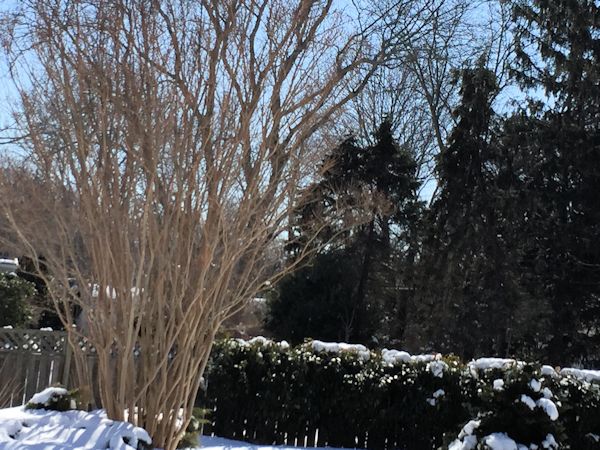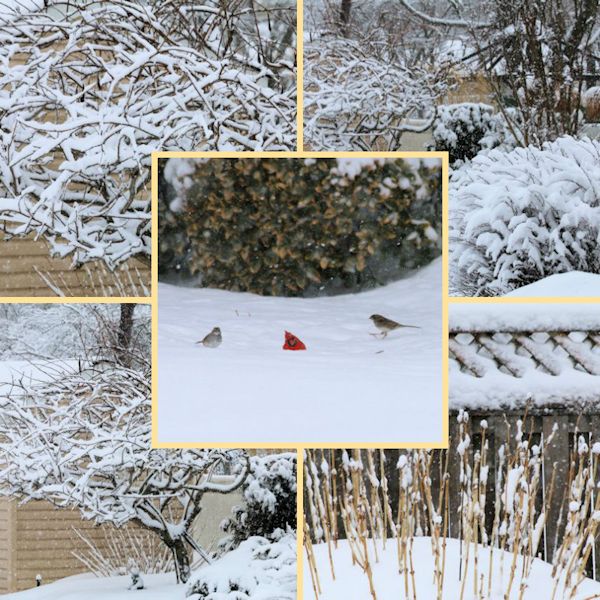 Spring weather is certainly delayed for a second year in a row here on Long Island and only time will tell how the gardens have endured the long and record cold winter. Memories come back from last season as I awaited spring to come in full force once the temperatures warmed to find later that the unusually cold and snowy winter had done some short-term damage to the garden. Of course there was concern and anticipation at the time as to whether or not the plants would survive at all. It did take some patience and tender loving care to undo the damage, but the plants did revive and were pretty much back to normal by mid-summer. Unfortunately I had met several new clients last year that had given up hope and taken their plants for dead when they could have possibly recovered, so I am passing on some information that may be of some value.
Spring weather is certainly delayed for a second year in a row here on Long Island and only time will tell how the gardens have endured the long and record cold winter. Memories come back from last season as I awaited spring to come in full force once the temperatures warmed to find later that the unusually cold and snowy winter had done some short-term damage to the garden. Of course there was concern and anticipation at the time as to whether or not the plants would survive at all. It did take some patience and tender loving care to undo the damage, but the plants did revive and were pretty much back to normal by mid-summer. Unfortunately I had met several new clients last year that had given up hope and taken their plants for dead when they could have possibly recovered, so I am passing on some information that may be of some value.

After the snow thaws and new spring sprouts appear on your hydrangea you may notice that the leaves are only coming from the bottom of the plant. If this is the case, do not immediately cut the stalks back. Give them some time to see if new growth will appear. If the buds on your hydrangea are dried and brown rather than green in late April/ May it means that the flower buds are dead and will produce no blooms for the season. If by mid-spring the stalks remain brown and dry with so sign of growth, then it is time to cut them all the way down to where new leaves appear. Your hydrangea will then form new stalks and recover. This is what had occurred on many of my hydrangea last year, both the types that bloom on new wood as well as old. I certainly missed the beautiful blooms they produce, but felt fortunate to have new green growth, and was pleased that the plants were spared.

Crape Myrtle was another plant that suffered the brutal temperatures but did recover nicely with some care. My arborist and work companion urged me to give the trees time and patience until the first of July to see how much damage was actually done and to see if the branches would slowly recover with new growth. Some of the branches were definitely dead so I removed them and awaited nature to take its course. The method to tell if a branch is dead or viable is to flex it or gently scrape the outside. Generally, if a branch is flexible and appears green inside it is alive. If the branch is dried, does not flex and appears brown under the bark then likely it is dead. I had my co-worker/arborist deep root feed the suffering plants to give their root systems a boost and by the end of June/beginning of July, my prized Crape Myrtle had recovered and were producing new stalks. Throughout the months of July through September they formed their buds and bloomed beautifully…which certainly was a relief.
 So while waiting for spring to arrive in just a couple short weeks, I am hoping the garden endured and will be showing all its glory in the not too distant future. One thing for sure…it has been a bit of a learning experience after last winters record snowfall and this years’ record cold. I am hoping that passing this information along will spare readers from some unwanted stress once back into the garden.
So while waiting for spring to arrive in just a couple short weeks, I am hoping the garden endured and will be showing all its glory in the not too distant future. One thing for sure…it has been a bit of a learning experience after last winters record snowfall and this years’ record cold. I am hoping that passing this information along will spare readers from some unwanted stress once back into the garden.
As Always…Happy Gardening!
2015 Lee@ A Guide to Landscape Design & Maintenance.








You must be logged in to post a comment.